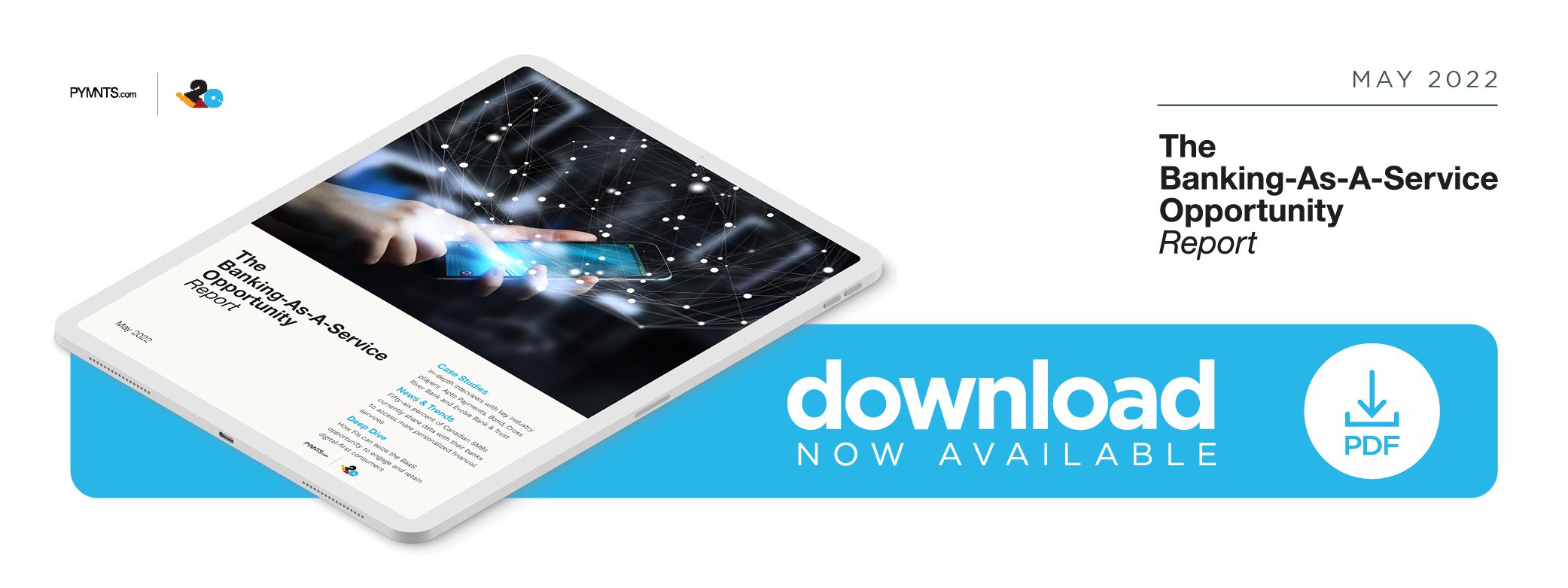Banking and shopping are more digital than ever, as customers have normalized going online for their needs in lieu of visiting brick-and-mortar establishments. This trend is not expected to reverse any time soon, and businesses of all types must gear up for the digital-first future.
Part of this shift has come from customers’ evolving payment needs, and digital transactions have now become an expectation. Businesses are scrambling to meet customers’ specific payment demands, which are as diverse as they are numerous.
“You’ve got to be able to offer this variety of payments,” said Scot Lenoir, chairman of Evolve Bank & Trust, in a recent interview with PYMNTS. “There [are] a lot of times where businesses will not take an ACH [payment] or someone will not take a check, so having a diverse and speedy setup of payments is extremely critical.”
This payments integration can be easier to plan than to execute, but Banking-as-a-Service (BaaS) can make it an achievable reality. PYMNTS talked with Lenoir about what customers look for in their payments and how BaaS can help merchants and businesses meet these demands with minimal friction.
Consumers’ Exacting Payment Demands
Merchants and their customers feel the need for speed when it comes to online payments, according to Lenoir. This need applies to domestic and international payments, despite the added layers of authentication and security needed for cross-border transactions.
“It’s all about the speed of payments — especially with the pandemic, where we’re seeing card and eCommerce usage is very high,” said Lenoir. “We have a number of use cases that are international as well, and [these entities] also want the speed [while the] cost [remains] low.”
Customer and merchant demands have changed quickly, though, and the next innovation around the corner could shake up their preferences yet again. Lenoir said that cryptocurrency could quickly become a key priority, and merchants may have to adjust their businesses to meet the new paradigm.
“It’s going to be interesting to see what role things like crypto and stablecoin have to play in the payment space,” said Lenoir. “If I’m in the United States and I want to pay my supplier in Singapore, can I do that through blockchain? I think that’s the next evolution of an additional payments protocol that could speed up payments and reduce friction.”
Whatever the future holds for online payments, merchants will need to be ready to implement new technologies at a moment’s notice. BaaS could play a vital role in this evolution.
How BaaS Makes Solutions Possible
These payment demands could be impossible to meet if not for BaaS. BaaS allows financial institutions like Evolve to handle all the accounting software on the back end, allowing merchants and other businesses to handle customer-facing experiences like user interfaces (UI).
“A lot of our clients have built the front-end UI, and they’ve created the customer experience, so we play a role in the background,” said Lenoir. “We give our clients a variety of payment rails based upon their customer needs because every customer will be a different use case. We have to be up 24/7 in terms of payments maintenance for those businesses, and so we built a lot with the integrating architecture.”
This variety could also pose a significant challenge, as each customer’s back-end software solutions can differ completely. Application programming interfaces (APIs) make this integration much easier, but it still takes a lot of work to ensure that every payment rail runs smoothly.
“APIs play a major, major part in this space, but at the end of the day, we have to take information and convert it back to a proprietary file because the rest of the payment chain is not API-driven,” said Lenoir. “We built an API for wire transfers, an API for remote deposit capture and an API for ACH, and we had to take that data and convert it into the traditional payment methods to solve that payment process.”
BaaS makes all of this invisible on the merchant’s end, however, demonstrating its ability to solve complex payment problems with minimum client effort. Merchants looking to improve their payments solutions could be well served to explore BaaS options for this reason.





